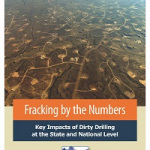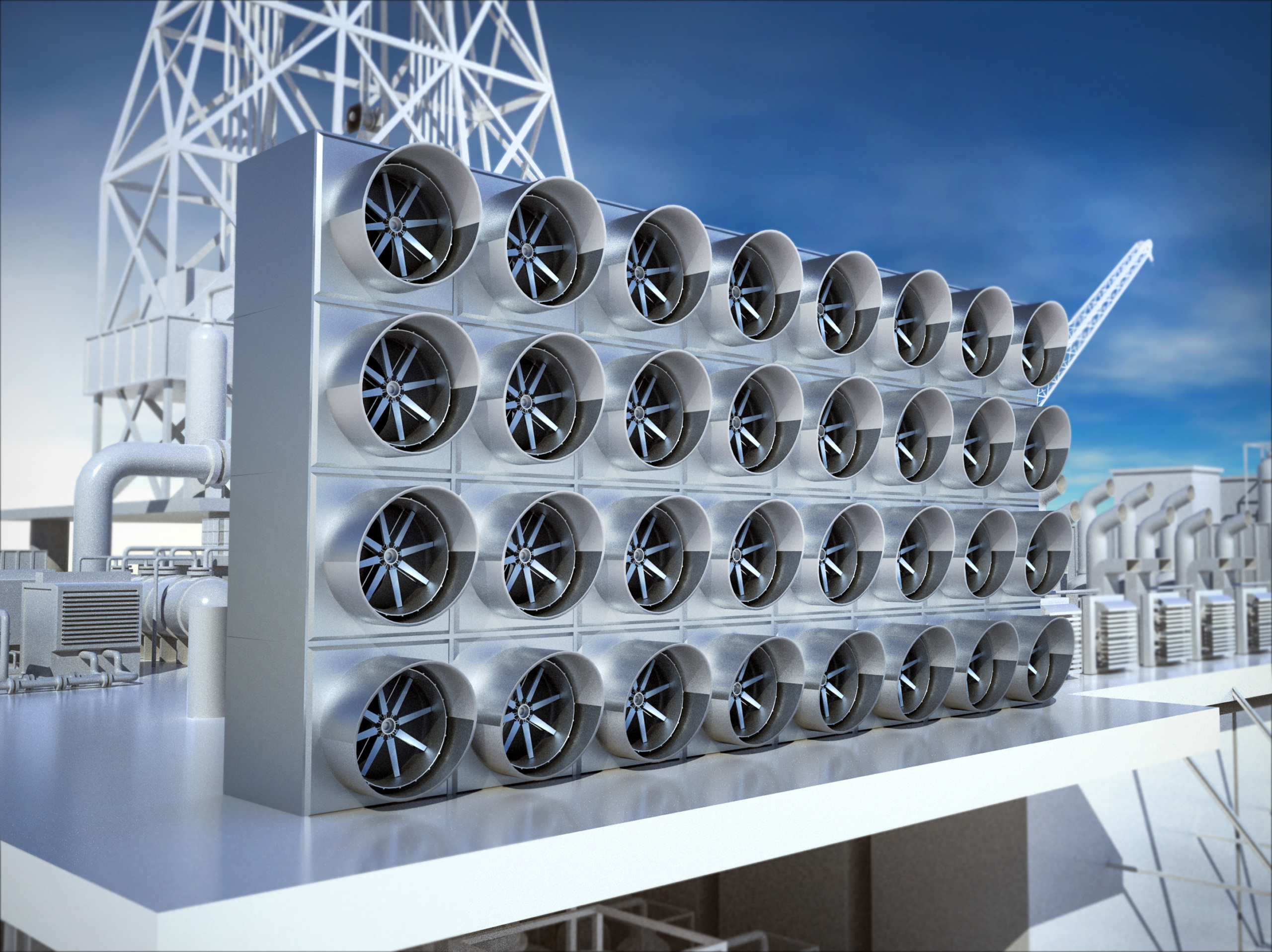Fracking by the Numbers
Key Impacts of Dirty Drilling at the State and National Level
Over the past decade, the oil and gas industry has fused two technologies—hydraulic fracturing and horizontal drilling—in a highly polluting effort to unlock oil and gas in underground rock formations across the United States. As fracking expands rapidly across the country, there are a growing number of documented cases of drinking water contamination and illness among nearby residents. Yet it has often been difficult for the public to grasp the scale and scope of these and other fracking threats. This report seeks to quantify some of the key impacts of fracking to date—including the production of toxic wastewater, water use, chemicals use, air pollution, land damage and global warming emissions.
Downloads
Environment Texas Research and Policy Center

Executive Summary
Over the past decade, the oil and gas industry has fused two technologies—hydraulic fracturing and horizontal drilling—in a highly polluting effort to unlock oil and gas in underground rock formations across the United States.
As fracking expands rapidly across the country, there are a growing number of documented cases of drinking water contamination and illness among nearby residents. Yet it has often been difficult for the public to grasp the scale and scope of these and other fracking threats. Fracking is already underway in 17 states, with more than 80,000 wells drilled or permitted since 2005. Moreover, the oil and gas industry is aggressively seeking to expand fracking to new states—from New York to California to North Carolina—and to areas that provide drinking water to millions of Americans.
This report seeks to quantify some of the key impacts of fracking to date—including the production of toxic wastewater, water use, chemicals use, air pollution, land damage and global warming emissions.
Table ES-1. National Environmental and Public Health Impacts of Fracking
Fracking Wells since 2005
82,000
Toxic Wastewater Produced in 2012 (billion gallons)
280
Water Used since 2005 (billion gallons)
250
Chemicals Used since 2005 (billion gallons)
2
Air Pollution in One Year (tons)
450,000
Global Warming Pollution since 2005 (million metric tons CO2-equivalent)
100
Land Directly Damaged since 2005 (acres)
360,000
Toxic wastewater: Fracking produces enormous volumes of toxic wastewater—often containing cancer-causing and even radioactive material. Once brought to the surface, this toxic waste poses hazards for drinking water, air quality and public safety:
- Fracking wells nationwide produced an estimated 280 billion gallons of wastewater in 2012.
- This toxic wastewater often contains cancer-causing and even radioactive materials, and has contaminated drinking water sources from Pennsylvania to New Mexico.
- Scientists have linked underground injection of wastewater to earthquakes.
- In New Mexico alone, waste pits from all oil and gas drilling have contaminated groundwater on more than 400 occasions.
Water use: Fracking requires huge volumes of water for each well.
- Fracking operations have used at least 250 billion gallons of water since 2005. (See Table ES-2.)
- While most industrial uses of water return it to the water cycle for further use, fracking converts clean water into toxic wastewater, much of which must then be permanently disposed of, taking billions of gallons out of the water supply annually.
- Farmers are particularly impacted by fracking water use as they compete with the deep-pocketed oil and gas industry for water, especially in drought-stricken regions of the country.
Table ES-2. Water Used for Fracking, Selected States
State
Total Water Used since 2005 (billion gallons)
Arkansas
26
Colorado
26
New Mexico
1.3
North Dakota
12
Ohio
1.4
Pennsylvania
30
Texas
110
West Virginia
17
Chemical use: Fracking uses a wide range of chemicals, many of them toxic.
- Operators have hauled more than 2 billion gallons of chemicals to thousands of fracking sites around the country.
- In addition to other health threats, many of these chemicals have the potential to cause cancer.
- These toxics can enter drinking water supplies from leaks and spills, through well blowouts, and through the failure of disposal wells receiving fracking wastewater.
Air pollution: Fracking-related activities release thousands of tons of health-threatening air pollution.
- Nationally, fracking released 450,000 tons of pollutants into the air that can have immediate health impacts.
- Air pollution from fracking contributes to the formation of ozone “smog,” which reduces lung function among healthy people, triggers asthma attacks, and has been linked to increases in school absences, hospital visits and premature death. Other air pollutants from fracking and the fossil-fuel-fired machinery used in fracking have been linked to cancer and other serious health effects.
Global warming pollution: Fracking produces significant volumes of global warming pollution.
- Methane, which is a global warming pollutant 25 times more powerful than carbon dioxide, is released at multiple steps during fracking, including during hydraulic fracturing and well completion, and in the processing and transport of gas to end users.
- Global warming emissions from completion of fracking wells since 2005 total an estimated 100 million metric tons of carbon dioxide equivalent.
Damage to our natural heritage: Well pads, new access roads, pipelines and other infrastructure turn forests and rural landscapes into industrial zones.
- Infrastructure to support fracking has damaged 360,000 acres of land for drilling sites, roads and pipelines since 2005.
- Forests and farmland have been replaced by well pads, roads, pipelines and other gas infrastructure, resulting in the loss of wildlife habitat and fragmentation of remaining wild areas.
- In Colorado, fracking has already damaged 57,000 acres of land, equal to one-third of the acreage in the state’s park system.
- The oil and gas industry is seeking to bring fracking into our national forests, around several of our national parks, and in watersheds that supply drinking water to millions of Americans.
Fracking has additional impacts not quantified here—including contamination of residential water wells by fracking fluids and methane leaks; vehicle and workplace accidents, earthquakes and other public safety risks; and economic and social damage including ruined roads and damage to nearby farms.
To address the environmental and public health threats from fracking across the nation:
- States should prohibit fracking. Given the scale and severity of fracking’s myriad impacts, constructing a regulatory regime sufficient to protect the environment and public health from dirty drilling—much less enforcing such safeguards at more than 80,000 wells, plus processing and waste disposal sites across the country—seems implausible. In states where fracking is already underway, an immediate moratorium is in order. In all other states, banning fracking is the prudent and necessary course to protect the environment and public health.
- Given the drilling damage that state officials have allowed fracking to incur thus far, at a minimum, federal policymakers must step in and close the loopholes exempting fracking from key provisions of our nation’s environmental laws.
- Federal officials should also protect America’s natural heritage by keeping fracking away from our national parks, national forests, and sources of drinking water for millions of Americans.
- To ensure that the oil and gas industry—rather than taxpayers, communities or families—pays the costs of fracking damage, policymakers should require robust financial assurance from fracking operators at every well site.
- More complete data on fracking should be collected and made available to the public, enabling us to understand the full extent of the harm that fracking causes to our environment and health.
Defining “Fracking”
In this report, when we refer to the impacts of “fracking,” we include impacts resulting from all of the activities needed to bring a shale gas or oil well into production using high-volume hydraulic fracturing (fracturing operations that use at least 100,000 gallons of water), to operate that well, and to deliver the gas or oil produced from that well to market. The oil and gas industry often uses a more restrictive definition of “fracking” that includes only the actual moment in the extraction process when rock is fractured—a definition that obscures the broad changes to environmental, health and community conditions that result from the use of fracking in oil and gas extraction.
Topics
Find Out More


